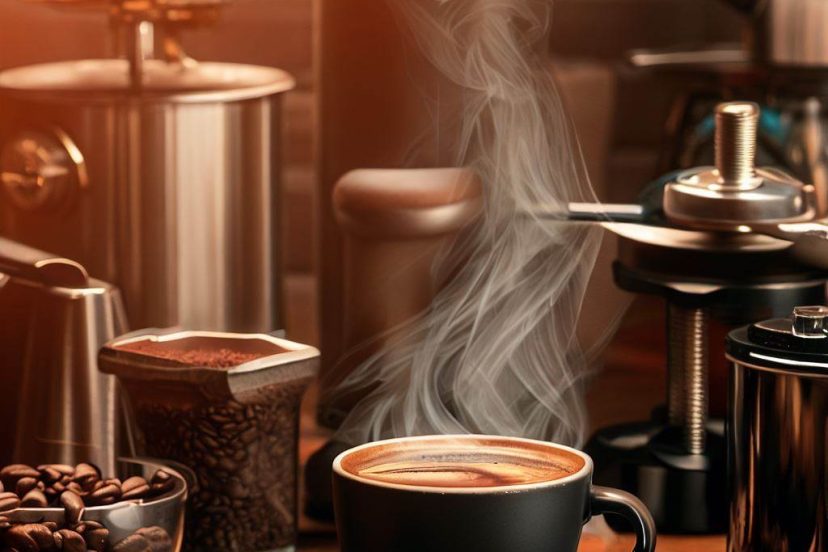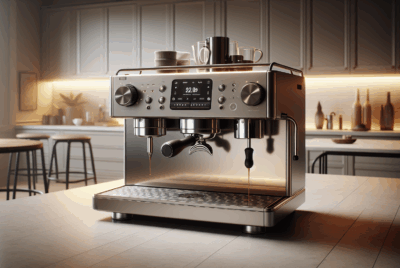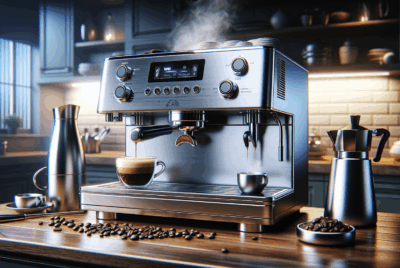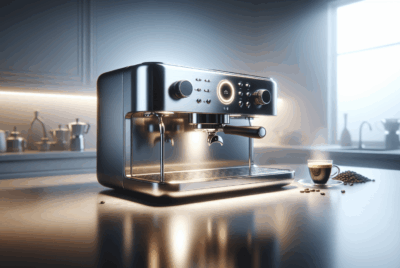Coffee Grinding Basics: Unlock the Secret to Incredible Home-Brewed Coffee
As an Amazon Associate, I earn from qualifying purchases, at no additional cost to you. Disclaimer
Introduction
Ah, coffee! That wonderful, aromatic delight that helps us kick start our mornings or keep us going during those long nights. But have you ever wondered how the grinding process affects the taste of your favorite cup of joe? As a fellow coffee lover, I’d like to share some key coffee grinding basics that dramatically improves our morning ritual.
Understanding the Importance of Coffee Grinding
Let’s first establish why grinding your coffee is an indispensable part of the brewing process. If you ask me, the day I discovered the magic of grinding my own coffee was a real game changer in my home brewing journey.
The Magic Hidden in Coffee Beans
In every little coffee bean, there lies a world of flavor waiting to be unleashed. It’s just like when you bite into a fresh piece of fruit—breaking the skin allows you to reach the juicy, flavorful flesh inside. Similarly, grinding coffee beans breaks them down so that hot water can extract the flavorful compounds more easily, bringing you that heavenly cup of brew.
Impact of Grind Size on Coffee Taste
Now here’s a fun experiment I did when I was just getting my feet wet in the coffee brewing world. I took the same type of beans and brewed them using different grind sizes. Guess what? Each brew tasted different! It was a real eye-opener (and not just because of all the caffeine).
Grind size affects how quickly the water can extract the flavors from the beans. The finer the grind, the more surface area is exposed, and the faster the flavors will extract. However, over-extraction can lead to a bitter taste as undesirable flavors start to seep out. On the flip side, a coarser grind exposes less surface area, slowing down the extraction process. This can result in a weak or under-extracted brew if not given enough time.
Coarse vs Fine: The Battle of the Grinds
There’s an ongoing battle in the world of coffee lovers: coarse versus fine grinds. But let me share a secret with you—it’s not really a battle at all. Instead, it’s about finding harmony between the grind size and your brewing method.
My espresso-loving friend swears by her finely ground coffee. On the other hand, my cousin, a French press devotee, won’t touch anything but coarsely ground beans. The fact is, different brewing methods require different grind sizes. An espresso needs a fine grind because the water is in contact with the grounds for only a short time. For a French press, the water and coffee steep together for several minutes, so a coarse grind works best.
The Key to Unlocking Flavor: Freshly Ground Coffee
Here’s another coffee grinding basics tip from my personal coffee chronicles: for the best flavor, grind your beans just before brewing. I can’t stress this enough! I learned this the hard way. I once bought pre-ground coffee because I was short on time. Despite the promise of convenience, the coffee lacked the rich, complex flavor I was used to. The reason? Ground coffee starts to lose its freshness almost as soon as it’s exposed to air.
Grinding is not just about breaking coffee beans into smaller pieces. It’s a delicate art that plays a critical role in your brew’s flavor profile.
Guide to Different Types of Coffee Grinders
Choosing a coffee grinder may seem like it’s not a big deal, but once you understand the differences, you’ll be better equipped to make the best choice. I remember when I was shopping for my first coffee grinder—I was so overwhelmed by the options. But as I learned more about each type, it became clear which grinder was right for me. Let’s get down to ground level and see what might be a good choice for you.
Blade Grinders
The first type of grinder you’ll likely encounter is the blade grinder. These little machines are like the ‘gateway grinder’ for most coffee lovers. My first grinder was a blade grinder. It was small, affordable, and it seemed like a safe choice.
Blade grinders have a spinning blade that chops coffee beans into small pieces. The longer you hold the grind button, the finer the grind you’ll get. However, the grind size isn’t always consistent, and this can lead to unpredictable flavors in your coffee. But despite their limitations, blade grinders can be a good starting point for coffee beginners, or if you’re on a tight budget.
Pros and Cons of Blade Grinders
On the plus side, blade grinders are more affordable and accessible. They are also compact, which makes them a good option for small kitchens or for taking on your travels. On the downside, they don’t offer a consistent grind, which can affect the taste of your coffee. Also, they can heat up the beans if used for too long, which can also influence the taste.
Burr Grinders
My journey into the world of coffee took a turn when I discovered burr grinders. These grinders work differently. Instead of chopping beans, they crush them between two burrs (either conical or flat) to a consistent size. Burr grinders are a favorite among coffee aficionados and professionals for their precision and consistency. The moment I switched to a burr grinder, my coffee quality shot up—I could taste the difference in every cup!
Pros and Cons of Burr Grinders
Burr grinders are known for their consistency, which is a huge pro for any coffee enthusiast. They also allow for more control over the grind size. You can adjust the distance between the burrs to get the exact grind size you want. However, these benefits come with a higher price tag, and they can be larger and louder than blade grinders.
Your Coffee Journey, Your Grinder
Whether you choose a blade or a burr grinder, remember that your choice is part of your unique coffee grinding basics journey. Start where you can and upgrade as your tastes evolve and your budget allows. My first blade grinder served me well, but investing in a burr grinder truly enhanced my coffee experience. Remember, at the end of the day, the best coffee grinder is the one that suits your needs and makes you excited to brew your next cup!
Coffee Grinding Basics: How to Choose Your Grinder
Choosing the right grinder is crucial, but it can be quite the conundrum. I remember standing in front of a coffee shop’s wall of grinders, paralyzed by the variety. I’ve learned a lot since then, and I’m here to share what I know to help guide you through your own coffee journey.
Know Your Brew
Before you choose your grinder, you need to know your brew. Different brewing methods require different grind sizes. Remember my friend with the espresso machine and my cousin with the French press? They wouldn’t switch grinders for anything. For espresso, a fine grind is needed, which is something a high-quality burr grinder can easily provide. For a French press, a coarse grind works best, which is achievable with both burr and blade grinders.
Evaluate Your Budget
Just like with any investment, it’s important to consider your budget. Are you ready to splurge on a high-end burr grinder or does a blade grinder seem more feasible right now? Don’t forget, the best grinder for you is one that aligns with your financial comfort zone. I started with a budget-friendly blade grinder before I was ready to upgrade to a burr grinder.
Grinder Size Matters
When choosing a grinder, consider the size and the capacity. If you’re living in a tiny apartment like I was when I started my coffee journey, a compact blade grinder might be the perfect fit. However, if you’re a coffee lover with a larger kitchen space and brewing multiple cups daily, a burr grinder with a larger capacity might be more suitable.
Consider the Noise Level
This might seem odd, but trust me, the noise level matters. My first blade grinder sounded like a small aircraft taking off—certainly not the most relaxing way to start the morning. Burr grinders, while generally larger, often operate more quietly. So, if you’re sensitive to noise or you tend to brew while others are sleeping, this might be a key factor to consider.
Prioritize Ease of Cleaning
Grinders, like any coffee equipment, need regular cleaning to ensure they continue to function well and don’t affect the taste of your brew. Some grinders are easier to clean than others. My burr grinder, for instance, is a bit more complicated to clean than my old blade grinder. But for the superior grind quality, I find it’s worth the extra effort.
Coffee Grinding Basics: Step-by-step Guide
Coffee grinding is a delicate balancing act that may seem complicated at first. I was in your shoes not too long ago, standing in front of my new grinder and wondering where to begin. Through trial, error, and plenty of tasty cups of coffee, I’ve gained insights I’d love to share. So, buckle up for a journey through the art of grinding coffee.
Step 1: Understand Your Beans
Before you even touch your grinder, get to know your coffee beans. Different beans have different flavor profiles, and these can be enhanced or muted depending on the grind. I remember grinding a batch of Ethiopian Yirgacheffe beans too finely once—it completely overpowered the delicate, fruity flavors I love. Don’t be afraid to experiment with different grind sizes for different beans to find your perfect match.
Step 2: Choose Your Grind Size
Next, decide on your grind size based on your brewing method. Are you making espresso, pour-over, French press, or something else? Each requires a different grind size, from fine to coarse. I’d suggest starting with a medium-fine size and then make your adjustments from there. Remember my experiments with grind sizes? They’ve served me well in understanding how to pair the grind with the brew method.
Step 3: Measure Your Coffee
Consistency is key when it comes to brewing great coffee. Start by measuring your coffee beans before you grind them. A good rule of thumb that I follow is the “Golden Ratio”—2 tablespoons of coffee for every 6 ounces of water. This might vary based on personal preference and the type of coffee you’re using, but it’s a good place to start.
Step 4: Grind Your Beans
Now comes the exciting part: grinding your beans! Pour your measured beans into your grinder, adjust the settings (if you’re using a burr grinder), and let it do its magic. Be mindful not to grind for too long with a blade grinder, as it can heat up the beans and potentially affect the taste.
Step 5: Brew Immediately
Grind freshness is key to a flavorful brew, so it’s best to use your grounds immediately after grinding. I still recall my disappointment when I used grounds that had been sitting out for a day—my coffee tasted noticeably flat. As a rule, grind only what you need per brew.
Step 6: Clean Your Grinder
Last but not least, clean your grinder after each use. This will prevent old grounds from mixing with new ones and affecting the flavor of your next brew. You really want to avoid stale grounds mixing in with fresh beans. Cleaning might sound like a chore, but it’s a small effort that pays off with each delicious cup.
Mastering the art of coffee grinding isn’t something that happens overnight—it’s a journey of discovery. It’s about playing around with different variables until you find what works for you. But once you get it right, the satisfaction of brewing a perfectly balanced cup of coffee is simply unparalleled.
Coffee Grinding Basics: Common Mistakes to Avoid
The road to perfect coffee isn’t without its bumps. Believe me, I’ve made my fair share of mistakes along the way. But the good news is, with every misstep, I learned something valuable. Here are some common pitfalls you should avoid when grinding coffee.
Grinding Too Much Coffee
One of the first mistakes I made was grinding too much coffee at once. Excited by my new grinder, I filled it to the brim only to realize I had more coffee than I could use in a single brew. The leftover grounds quickly lost their freshness. Remember, coffee starts to oxidize and lose its flavor the moment it’s ground. Grind only what you need for your immediate brew to keep your coffee tasting its best.
Ignoring Grind Size
Another mistake is ignoring the importance of grind size. I thought “ground coffee is ground coffee,” but I was sorely mistaken. Brewing French press coffee with a fine grind led to an over-extracted, bitter brew that was far from enjoyable. Each brewing method requires a specific grind size. Pay attention to this detail—it’s crucial for a well-extracted cup.
Neglecting Grinder Maintenance
Lastly, don’t neglect your grinder’s maintenance. Early in my coffee journey, I didn’t pay much attention to cleaning my grinder. It was only when I noticed an odd taste in my brew that I realized my mistake. Coffee oils and small particles left in the grinder can become rancid over time and impact your coffee’s flavor. Regularly clean your grinder to avoid this issue.
Conclusion
The world of coffee grinding is more complex and fascinating than one might initially think. As an important step in the coffee brewing process, it can significantly affect the taste of your final cup. But with knowledge, a little practice, and the willingness to learn from your mistakes, you can master the art of coffee grinding basics.
From understanding the importance of coffee grinding, to exploring the different types of grinders, to learning the step-by-step guide to grinding and avoiding common pitfalls, we’ve been through a lot! My final piece of advice to you? Don’t rush the process, appreciate each step, and most importantly, enjoy your coffee.
Frequently Asked Questions (FAQs)
1: Is it really necessary to grind my own coffee?
Absolutely! Grinding your own coffee right before brewing is one of the best ways to achieve a fresh, flavorful cup.
2: Can I use a blade grinder for all types of brewing methods?
While you can use a blade grinder for different brewing methods, it can be challenging to achieve consistent and specific grind sizes with it. This might affect the taste of your coffee.
3: How often should I clean my coffee grinder?
Ideally, you should clean your grinder after each use to remove leftover coffee particles and oils. However, a deep clean may be performed less frequently, depending on your grinder and usage.
4: Does the type of coffee bean affect the grind size?
While the brewing method mainly determines grind size, some coffee beans have different hardness or density that could slightly affect the grind.
5: How long does it take for ground coffee to lose its freshness?
Ground coffee starts to lose its freshness almost immediately after being exposed to air. It’s best to use freshly ground coffee right away for optimal flavor.
6. Is a burr grinder really better than a blade grinder?
For consistency and customization, a burr grinder is generally considered superior. However, blade grinders can still make good coffee and are a more affordable option.
7. Why is my coffee always too bitter?
This could be due to over-extraction, which happens when your coffee grounds are too fine or your brewing time is too long. Try using a coarser grind or reducing your brew time.




